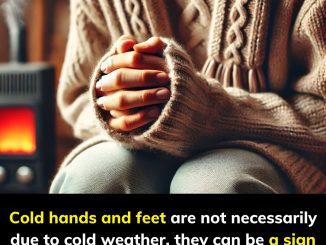Breast cancer is one of the most commonly diagnosed cancers in women worldwide—but it doesn’t stop there. Although women are most affected, anyone with breast tissue—including men—can develop breast cancer. And while the word “cancer” can sound overwhelming, understanding the signs, causes, and types can help you take control of your health or support someone you love.
So let’s break it all down—clearly, simply, and with the compassion this topic deserves.
What Is Breast Cancer?

At its core, breast cancer is the uncontrolled growth of abnormal cells in the breast tissue. It usually begins in the ducts (which carry milk) or lobules (which produce milk), but it can also start in other breast tissues and eventually spread if untreated.
After skin cancer, breast cancer is the most diagnosed cancer in women in the U.S. Still, many people are surprised to learn that men can also get it—though it’s less common.
Types of Breast Cancer You Should Know
There isn’t just one type of breast cancer. The disease comes in various forms—some more aggressive than others. Here are the most recognized types:
- Angiosarcoma – A rare cancer that forms in the lining of blood vessels in the breast.
- Ductal Carcinoma In Situ (DCIS) – A noninvasive form where abnormal cells are confined to the ducts.
- Inflammatory Breast Cancer – A rare and aggressive form that blocks lymph vessels, causing redness and swelling.
- Invasive Lobular Carcinoma – Starts in the lobules and can spread to surrounding tissue.
- Lobular Carcinoma In Situ (LCIS) – Not technically cancer, but an indicator of increased risk.
- Male Breast Cancer – Occurs in the small amount of breast tissue men have.
- Paget’s Disease of the Breast – A rare cancer that affects the skin of the nipple.
- Recurrent Breast Cancer – Cancer that comes back after initial treatment.
Video : Breast cancer – Symptoms and treatment
Common Symptoms of Breast Cancer
Breast cancer doesn’t always look or feel the same for everyone. Some people may feel a lump, while others may see a change in appearance. The key is knowing what’s normal for your body—and what’s not.
Here are symptoms to watch for:
- A noticeable change in breast size or shape
- A lump or thickened area in the breast or underarm that persists
- Skin changes such as dimpling, puckering, or scaling
- Discoloration—skin may appear red, purple, or darker
- A marble-like area under the skin
- Nipple discharge, especially if it’s bloody or clear
- Inverted nipple or pain around the nipple area
If you notice any of these changes, don’t panic—but do schedule an appointment with your healthcare provider.
Not Every Breast Change Means Cancer
It’s important to note that benign (non-cancerous) conditions can cause similar symptoms.
Some examples include:
- Fibrocystic breast changes
- Cysts
- Infections like mastitis
- Hormonal changes during your menstrual cycle, pregnancy, or menopause
Even birth control pills or hormone replacement therapy can affect how your breasts feel. But don’t rely on guesswork—if something feels off, always get it checked.
Stages of Breast Cancer

Like many cancers, breast cancer is categorized by stages based on how far it has spread. Here’s a simplified look at the stages:
- Stage 0: Noninvasive. Cancer cells are confined to the ducts or lobules.
- Stage I: Small tumor with minimal spread to nearby breast tissue.
- Stage II: Larger tumor, possibly spreading to nearby lymph nodes.
- Stage III: Locally advanced. Cancer has invaded nearby tissues and nodes.
- Stage IV: Metastatic breast cancer. It has spread to distant parts of the body like the bones, lungs, liver, or brain.
The earlier it’s detected, the better the outcome. This is why early screening is vital.
What Causes Breast Cancer?
There’s no single cause, but several risk factors may increase your chances:
- Genetics: Inherited mutations in genes like BRCA1 and BRCA2
- Family history of breast cancer
- Age: Risk increases as you get older
- Hormones: Estrogen exposure over a long period (early menstruation, late menopause)
- Lifestyle: Smoking, excessive alcohol, lack of exercise
- Radiation exposure
- Obesity, especially after menopause
However, having one or more risk factors doesn’t mean you’ll get breast cancer. Likewise, some people develop breast cancer with no known risk factors at all.
When Should You See a Doctor?
If you notice a lump or any new changes in your breasts, don’t wait. Even if you’ve had a recent clear mammogram, new symptoms deserve medical attention.
Video : Foods to Avoid During Breast Cancer and its Treatment
Signs to take seriously:
- Persistent pain in one breast
- Unexplained nipple discharge
- Swelling, especially if only on one side
- Skin changes that don’t go away
The bottom line? If it feels wrong, get it checked.
Final Thoughts: Stay Aware, Stay Empowered
Breast cancer is scary—but knowledge is power. Understanding the symptoms, causes, and stages helps you stay one step ahead. And if you’re armed with that knowledge, you’re already stronger than the disease.
No matter your gender, age, or health history, being aware of what your body is telling you is the first line of defense. And for those going through it—you are not alone. Countless people are fighting and thriving every day, supported by early detection, advancing treatment, and strong communities.
So be proactive. Schedule your screenings. Listen to your body. And never ignore what doesn’t feel right.
Because when it comes to your health, it’s always better to ask and be sure—than stay silent and be sorry.


